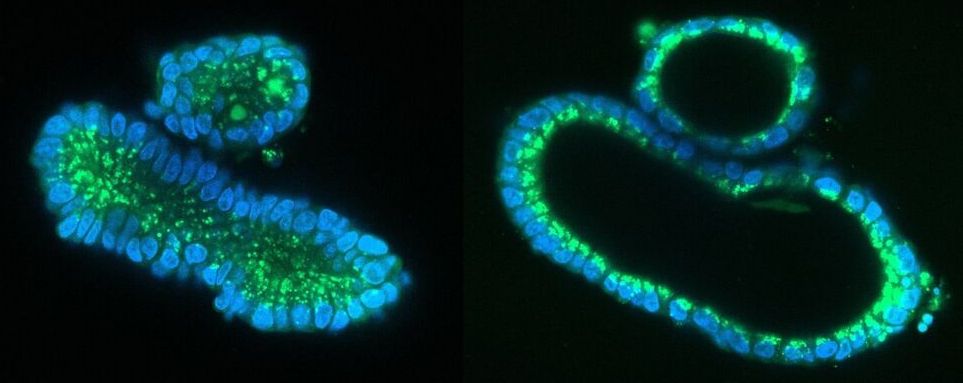The service’s algorithm for cropping photos favors people with slimmer, younger faces and lighter skin.
SpaceX’s Starship rocket is gearing up for its most ambitious test yet, and CEO Elon Musk has shared images of the rocket stacked up.
Dean’s appearance at TED comes during a time when critics—including current Google employees —are calling for greater scrutiny over big tech’s control over the world’s AI systems. Among those critics was one who spoke right after Dean at TED. Coder Xiaowei R. Wang, creative director of the indie tech magazine Logic, argued for community-led innovations. “Within AI there is only a case for optimism if people and communities can make the case themselves, instead of people like Jeff Dean and companies like Google making the case for them, while shutting down the communities [that] AI for Good is supposed to help,” she said. (AI for Good is a movement that seeks to orient machine learning toward solving the world’s most pressing social equity problems.)
TED curator Chris Andersen and Greg Brockman, co-founder of the AI ethics research group Open AI, also wrestled with the unintended consequences of powerful machine learning systems at the end of the conference. Brockman described a scenario in which humans serve as moral guides to AI. “We can teach the system the values we want, as we would a child,” he said. “It’s an important but subtle point. I think you do need the system to learn a model of the world. If you’re teaching a child, they need to learn what good and bad is.”
There also is room for some gatekeeping to be done once the machines have been taught, Anderson suggested. “One of the key issues to keeping this thing on track is to very carefully pick the people who look at the output of these unsupervised learning systems,” he said.
Since receiving a $25 million grant in 2,019 to become the first National Science Foundation (NSF) Quantum Foundry, UC Santa Barbara researchers affiliated with the foundry have been working to develop materials that can enable quantum information-based technologies for such applications as quantum computing, communications, sensing, and simulation.
They may have done it.
In a new paper, published in the journal Nature Materials, foundry co-director and UCSB materials professor Stephen Wilson and multiple co-authors, including key collaborators at Princeton University, study a new material developed in the Quantum Foundry as a candidate superconductor—a material in which electrical resistance disappears and magnetic fields are expelled—that could be useful in future quantum computation.
Researchers from the group of Hans Clevers (Hubrecht Institute) corrected mutations that cause cystic fibrosis in cultured human stem cells. In collaboration with the UMC Utrecht and Oncode Institute, they used a technique called prime editing to replace the ‘faulty’ piece of DNA with a healthy piece. The study, published in Life Science Alliance on August 9 shows that prime editing is safer than the conventional CRISPR/Cas9 technique. “We have for the first time demonstrated that this technique really works and can be safely applied in human stem cells to correct cystic fibrosis.”
Cystic fibrosis (CF) is one of the most prevalent genetic diseases worldwide and has grave consequences for the patient. The mucus in the lungs, throat and intestines is sticky and thick, which causes blockages in organs. Although treatments are available to dilute the mucus and prevent inflammations, CF is not yet curable. However, a new study from the group of Hans Clevers (Hubrecht Institute) in collaboration with the UMC Utrecht and Oncode Institute offers new hope.
Correcting CF mutations
The researchers succeeded in correcting the mutations that cause CF in human intestinal organoids. These organoids, also called mini-organs, are tiny 3D structures that mimic the intestinal function of patients with CF. They were previously developed by the same research group from stem cells of patients with CF and stored in a biobank in Utrecht. For the study, published in Life Science Alliance, a technique named prime editing was used to replace the piece of mutated DNA that causes CF with a healthy piece of DNA in these organoids.
Caffeinated coffee might be protective to overall health, but so is decaf. For example, a 2,019 systematic review published in the Journal of Human Nutrition and Dietetics aiming to “investigate the association of caffeinated and decaffeinated coffee consumption and all-cause mortality” found “similar inverse associations [between] caffeinated coffee and decaffeinated coffee [and all-cause mortality.]”
But is coffee healthy? And do coffee drinkers live longer than non-coffee drinkers?
At the turn of the 20th century, it was considered common knowledge that coffee was unhealthy—there were advertising claims that coffee drinking caused blindness and that “you can recover from any ordinary disease by discontinuing coffee.” And while that may obviously be untrue, there are continuing fears about whether coffee is actually healthy or not. Google receives 4,400 queries a month about” why coffee is bad for you” (for context, “why coffee is good for you” gets only 1,300 queries a month).
So with human life extension in mind, I decided to dig into the research. Can coffee consumption actually help spanners extend their healthspan and lifespan? How much is the right dose? How much is too little?
For several years, Lu’s lab has been working on ways to use DNA to store information such as memory of cellular events. In 2,014 he and Farzadfard developed a way to employ bacteria as a “genomic tape recorder,” engineering E. coli to store long-term memories of events such as a chemical exposure.
Technique for editing bacterial genomes can record interactions between cells, may offer a way to edit genes in the human microbiome.
Biological engineers at MIT
MIT is an acronym for the Massachusetts Institute of Technology. It is a prestigious private research university in Cambridge, Massachusetts that was founded in 1861. It is organized into five Schools: architecture and planning; engineering; humanities, arts, and social sciences; management; and science. MIT’s impact includes many scientific breakthroughs and technological advances.
“The role of human influence on the climate system is undisputed.”
ClimateChange is widespread, rapid, & intensifying – IPCC.
Landmark assessment says greenhouse gases are unequivocally driving extreme weather — but nations can still prevent the worst impacts.
Not necessarily the end of humans, just humans as we recognize the species.
Here’s how Technological SIngularity will lead to an explosion in machine intelligence and the end of human history.
The possible impact of heavy peanut consumption by cancer patients on survival will need to be investigated in further population-based epidemiological studies.
Summary: A new study reports cancer patients who frequently eat peanuts may be at increased risk of their cancer spreading. Researchers found Peanut agglutinin (PNA), a carbohydrate-binding protein that enters blood circulation after a peanut is eaten, interacts with endothelial cells to produce cytokines. Some of the cytokines are recognized promoters of cancer metastasis.
Source: University of Liverpool
A study by University of Liverpool researchers has identified new factors accompanying previous findings that frequent consumption of peanuts by cancer patients could increase risk of cancer spread.
The study, published in Carcinogenesis, shows that Peanut agglutinin (PNA) — a carbohydrate-binding protein that rapidly enters into the blood circulation after peanuts are eaten — interacts with blood vascular wall (endothelial) cells to produce molecules called cytokines.









